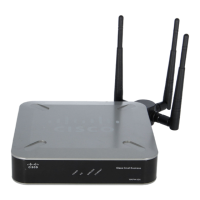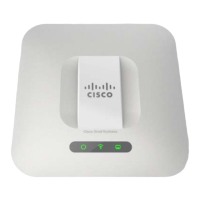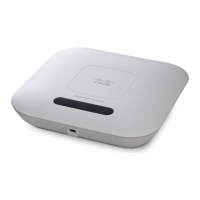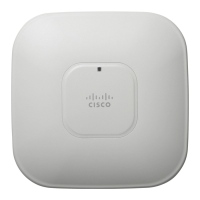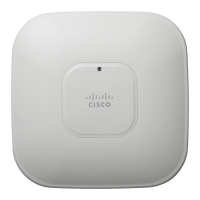Status
Rogue AP Detection
Cisco AP541N Dual-band Single-radio Access Point Quick Start Guide 31
2
Action
If an access point is in the Detected Rogue AP List, you can
click Grant to move the access point from the Detected
Rogue AP List to the Known AP List.
If an access point is in the Known AP List, click the Delete
button to move the access point from the Known AP List to
the Detected Rogue AP List.
NOTE: The Detected Rouge AP List and Known AP List
provide information only; the Cisco AP541N does not have
any control over the access points on the list and cannot
apply any security policies to access points detected
through the RF scan.
MAC
Shows the MAC address of the detected access point.
Beacon Int.
Shows the Beacon interval of another access point.
Beacon frames are transmitted by an access point at regular
intervals to announce their existence on the wireless
network. The default behavior is to send a beacon frame
once every 100 milliseconds (or 10 per second).
The Beacon Interval for your access point is set on the
Wireless > Advanced Settings page. (See Modifying
Advanced Settings, page 74.)
Type
Indicates the type of device:
• AP indicates the detected device is an access point
that supports the IEEE 802.11 Wireless Networking
Framework in Infrastructure Mode.
• Ad hoc designation indicates a neighboring station
running in ad hoc mode. Stations set to ad hoc mode
communicate with each other directly, without the use
of a traditional access point. Ad-hoc mode is an IEEE
802.11 Wireless Networking Framework also referred
to as peer-to-peer mode or an Independent Basic
Service Set (IBSS).
Table 6 Neighboring Access Point Information
Field Description
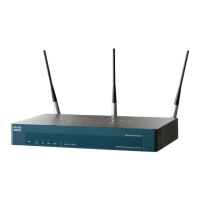
